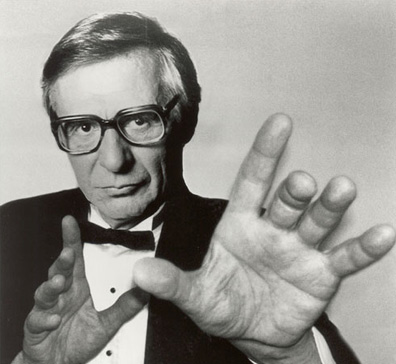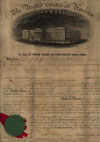
This doesn’t change the law, a trade secret is a trade secret regardless of whether it is memorized or in a more tangible form, just clarifies that even the Amazing Kreskin will still have to abide by trade secret laws. Al Minor & Assoc., Inc. v. Martin, Slip Opinion No. 2008-Ohio-292.
The court was asked to opine on the question: “Whether customer lists compiled by former employees strictly from memory can be the basis for a statutory trade secret violation.” Unfortunately, the better question was: “Whether customer lists compiled by former employees from publicly available sources nullify a statutory trade secret violation for the same information held in memory.”
In the unanimous decision, the court ruled that:
- Information that constitutes a trade secret pursuant to R.C. 1333.61(D) does not lose its character as a trade secret if it has been memorized.
- The Uniform Trade Secrets Act does not apply to the use of memorized information that is not a trade secret pursuant to R.C. 1333.61(D).
Robert Martin worked as a pension analysts at Al Minor & Associates, Inc. (AMA), an actuarial firm that designs and administers retirement plans and had approximately 500 clients. AMA hired Martin but did not require him to sign either an employment contract or noncompete agreement. (Practice tip: If you are going to be hiring specialized employees with access to sensitive information, put in place a proper employment contract with confidentiality and noncompete clauses)
It probably didn’t help Martin’s case that he started his own company, Martin Consultants, L.L.C., while still employed at AMA. In 2003, he resigned from AMA and, without taking any documents containing confidential client information, successfully solicited 15 AMA clients with information from his memory.
Spurned, AMA filed suit claiming that he had violated Ohio’s Trade Secrets Act by using confidential client information to solicit those clients. The trial court sided with AMA to the tune of $25,973, specifically noting that the fact that Martin had solicited AMA’s clients from memory did not prevent the finding of a trade secret violation.
The Franklin County Court of Appeals affirmed the trial court stating that because “a client list such as the one at issue fits the statutory definition of a trade secret under R.C. 1333.61(D), AMA’s memorized client list warrants trade secret status.”
Being tenacious, if nothing else, Martin filed a discretionary appeal with the Ohio Supreme Court.
The issue here was whether the use of a memorized client list can be the basis of a trade secret violation pursuant to Ohio’s Uniform Trade Secrets Act (UTSA), which defines trade secret to mean:
[I]nformation, including the whole or any portion or phase of any scientific or technical information, design, process, procedure, formula, pattern, compilation, program, device, method, technique, or improvement, or any business information or plans, financial information, or listing of names, addresses, or telephone numbers, that satisfies both of the following:
(1) It derives independent economic value, actual or potential, from not being generally known to, and not being readily ascertainable by proper means by, other persons who can obtain economic value from its disclosure or use.
(2) It is the subject of efforts that are reasonable under the circumstances to maintain its secrecy.
Martin argued that a client list memorized by a former employee cannot be the basis of a trade secret violation and that the appellate court’s decision in this case overly restricts his right to compete in business against AMA. He also argues that AMA should not have the right to control the use of his memory and that AMA had the opportunity to protect its confidential information by way of an employment contract, which it did not do.
(It’s worth noting that Martin also briefed a second proposition of law asserting that AMA’s client list does not satisfy the definition of a trade secret because it contained information that is available to the public via the internet. However, because Martin never raised this issue in his memorandum in support of jurisdiction, the court didn’t consider it. We’re left to wonder how that would have effected the outcome.)
The court noted that Ohio’s protection of trade secrets arose at common law:
In one of the earliest appellate decisions concerning trade secrets, an Ohio circuit court defined a trade secret as “a plan or process, tool, mechanism, or compound, known only to its owner and those of his employees to whom it is necessary to confide it, in order to apply it to the uses for which it is intended.
Furthermore, in Plain Dealer, the court established a six-factor test for determining whether information constitutes a trade secret pursuant to R.C. 1333.61(D):
- The extent to which the information is known outside the business;
- the extent to which it is known to those inside the business, i.e., by the employees;
- the precautions taken by the holder of the trade secret to guard the secrecy of the information;
- the savings effected and the value to the holder in having the information as against competitors;
- the amount of effort or money expended in obtaining and developing the information; and
- the amount of time and expense it would take for others to acquire and duplicate the information.
The court held that neither R.C. 1333.61(D) nor any other provision of the UTSA suggests that, for purposes of trade secret protection, the General Assembly intended to distinguish between information that has been reduced to some tangible form and information that has been memorized:
R.C. 1333.61(D) refers only to “information,” including “any business information or plans, financial information, or listing of names, addresses, or telephone numbers,” and the statute makes no mention of writings or other physical forms that such information might take. Furthermore, nothing in our six-factor test adopted in Plain Dealer, 80 Ohio St.3d at 524-525, 687 N.E.2d 661, indicates that the determination of whether a client list constitutes a trade secret depends on whether it was capable of being memorized or had been memorized.
In addition, more than 40 other states have adopted the Uniform Trade Secrets Act in substantially similar form, and the majority position is that memorized information can be the basis for a trade secret violation. There are, however, some outliers in some states that have decided to exclude memorized information.
Treatises on the subject of trade secrets also support the position that the determination of whether a client list is a protected trade secret does not depend on whether a former employee has memorized it. For example, in 2 Louis Altman, Callmann on Unfair Competition, Trademarks and Monopolies (5th Ed.2005) 14-192-14-195, Section 14.25, the text states that, “[a]s to customer lists, the older rule in some jurisdictions permits taking by memorization. In principle, however, the distinction between written and memorized information should not be encouraged. The form of the information and the manner in which it is obtained are unimportant; the nature of the relationship and the defendant’s conduct should be the determinative factors. The distinction places a premium upon good memory and a penalty upon forgetfulness, and it cannot be justified either from a logical or pragmatic point of view.”
Summing up, the court concluded that:
We recognize that the protection of trade secrets involves a balancing of public policies, and as stated in E.I. duPont de Nemours & Co. v. Am. Potash & Chem. Corp. (1964), 41 Del.Ch. 533, 548, 200 A.2d 428, “Among the substantial and conflicting policies at play * * * are the protection of employers’ rights in their trade secrets * * * versus the right of the individual to exploit his talents.” However, by adopting the Uniform Trade Secrets Act, with the express purpose “to make uniform the law with respect to their subject among states,” the General Assembly has determined that public policy in Ohio, as in the majority of other jurisdictions, favors the protection of trade secrets, whether memorized or reduced to some tangible form. And, as we stated in Johnson v. Microsoft Corp., 106 Ohio St.3d 278, 2005-Ohio-4985, 834 N.E.2d 791, “The Ohio General Assembly, and not this court, is the proper body to resolve public policy issues.” Id. at 14, citing State v. Smorgala (1990), 50 Ohio St.3d 222, 223, 553 N.E.2d 672 (“the General Assembly should be the final arbiter of public policy”).
The court concluded that information that constitutes a trade secret pursuant to R.C. 1333.61(D) does not lose its character as a trade secret if it has been memorized. It is the information that is protected by the UTSA, regardless of the manner, mode, or form in which it is stored – whether on paper, in a computer, in one’s memory, or in any other medium.
This ruling does not, however, remove unprotected information from the public domain:
Every employee will of course have memories casually retained from the ordinary course of employment. The Uniform Trade Secrets Act does not apply to the use of memorized information that is not a trade secret pursuant to R.C. 1333.61(D).
Left unsaid is what would happen if Martin had just searched the internet for the information and came up with the same results? Employees cannot be asked — absent some type of enforceable noncompete agreement — to erase their knowledge about their previous employer, like names of clients.
So, could Martin have looked up the information in a directory and been free to use the information or would his very knowledge of some client names nullify any attempt at independent creation?
This case seems to have raised more questions than it answered.

 After the Department of Commerce sent a letter to the
After the Department of Commerce sent a letter to the